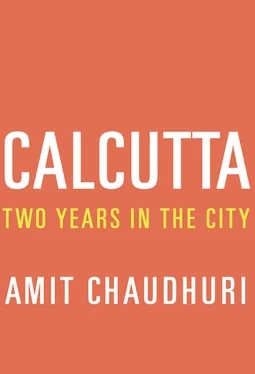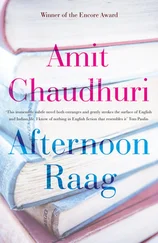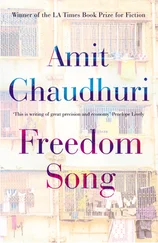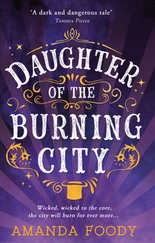Then, in 1965, Samirda met his wife-to-be on her twenty-first birthday: 17th July. It was at a rooftop party at the plastic surgeon Jaya Roy’s house on Landsdowne Road: as in the perennial moment of noticing that precedes love and sometimes marriage, Samirda saw that she was “sitting quietly,” not talking to anybody. The heroine must always be reticent and unsociable until the protagonist arrives. He asked to be introduced, and informs me they “clicked” at once. Samirda had probably a great deal to give of himself to the right person. He gives a bit of himself to his guests at tea, and what he offers at some point struck me — once my natural distrust began to wear off — as true and simple, almost too simple (this might have been a cause of the distrust), undiminished by circumstances and even the delusions of his class. So it wasn’t surprising that Anita Roy, as she then was, liked him: for being “well-turned out” and for his “impeccable manners.” He, in turn, liked her “charm and reserve,” her “baby’s face” and her “tall, willowy figure”: what he calls, touchingly, her “mojar chehara.” “Mojar chehara” could be translated, variously, as “funny looking” or “interesting looking” or even “charming to look at.” Today, Anitadi still has that mojar chehara; tall for an Indian woman of her generation, her hair is steely grey, but, otherwise, she is attractive, partly because of her contained demeanour and the emotion and laughter she holds in check — she’s perhaps more attractive now than she was at twenty-one, with a retrospective allure that’s rare and not to be discounted. She almost always wears pale tangail saris, and her complexion is what racist Indians, when they’re being polite, call “dusky.” Spotting her and then winning her over hints at what Samirda’s chosen function and project in life would be — not to be a man of great ambition or corporate vision, as his immediate ancestors had been, but a self-deprecating connoisseur of comeliness. In his wife-to-be, he’d found someone who didn’t regard this project (she couldn’t have known, and nor could he, that it was going to be a lifetime’s work) as mere indulgence.
When Anita Roy and Samir Mukherjee finally married in February 1968, the tumult and far-reaching Naxalite disturbances around them — about to permanently transform this city — were echoed by a different kind of exigency. Samirda’s mother disowned him. She asked him to leave the majestic house, his maternal grandfather’s, in which he’d grown up, largely happily, and which, by the time I met him in 1993, was Viswa Bharati University Press’s Calcutta office. So he and Anitadi moved hastily to what Samirda calls, casually, a “pied-à-terre,” but what must have been quite a smart apartment, in swish Tivoli Park (finally razed to the ground in 2010) on Lower Circular Road, probably a fifteen minutes’ walk from the mansion from which he’d been ejected by his mother. Her objection to the marriage didn’t have to do with the bride’s lineage, or, for instance, the fact that Anitadi’s mother was an “Anglo-Indian” (Anitadi’s father was a well-known general surgeon). She simply couldn’t bear Samirda getting married.
Mrs. Mukherjee was much too fond of her son, though, for the estrangement to last long. After three months, returning from Ranchi, where she’d fled to escape what Samirda calls the entirely “imaginary” scandal of the marriage, she met the newly-weds and “forgave” Samirda. The couple continued to live in Tivoli Park, though, in the magic of what can only be called a “service apartment.” Strictly speaking, what they lived in was a “cottage,” being provided with lobster thermidor and fish Portuguese and gateaux by a cook called Daniel, who catered to some of the building’s fortunate tenants and homeowners. One of the legacies of the Bengali Ingabanga community is its fanciful obsession with “continental,” what in these plebeian times is briefly, and with proprietary nonchalance, referred to as “conti”: not French cuisine, or Italian, or Spanish, or even English, but a sui generis colonial variant, much of which, like Indian food in England, is unavailable anywhere else in the world; you must come to Calcutta to procure and taste it, and you must leave Calcutta to understand it is a fiction. Some of these dishes (like chicken Tetrazzini, which I first heard of from Samirda, immediately deciding it sounded like a hoax) remain as stubbornly unchanged since they first appeared on the menu as the old government buildings facing Chowringhee. When Samirda wishes to convey to me that the ten years he spent with Anitadi at the pied-à-terre were happy ones, it’s not his own life or hers but the lunches and dinners he describes. In 1978, there was a rumour that Tivoli Park might be purchased by a contractor and torn down; the Mukherjees thought it was time to depart the pied-à-terre. By now, the mansion in which Samirda had grown up had been sold to Viswa Bharati; a wall had been erected in the middle of what had been his late maternal grandfather’s garden, and, on the other side, a two-storeyed house had come up. To the ground-floor flat of this building moved Mrs. Mukherjee Senior and her long-forgiven son and daughter-in-law; here, roughly fifteen years later, after going up the narrow driveway, we encountered the small family of three gathered discreetly to receive us.
The professional antecedents of Samir Mukherjee’s immediate forefathers, and his own, belonged to a company called Martin Burn Ltd. Created originally in 1890 by Sir Thomas Acquinas Martin and Rajen Mookerjee (later Sir Rajen), it went on to become Calcutta’s foremost construction company, and build landmarks like the Esplanade Mansion. This building, if you make eye contact with it during a traffic jam, still, in that brief, lethargic duration, has the power to arrest you with its art nouveau take on the Tower of Babel, to be both of and not of the billboards, the swarms of hawkers, the buses that take off without warning at terrifying speed, and the pedestrians constantly rushing about the Esplanade. It is one of those many things that make Calcutta at once a European city and a Bengali one.
Burn and Co. also built the monument that serves as a metonym for the city on magazine and book covers, and in documentaries on television — when, that is, the destitute and Mother Teresa aren’t standing in. The work of William Emerson, the architect of Bombay’s magnificent Crawford Market, Calcutta’s Victoria Memorial is a monstrosity, the curiously private and laborious vision of a person who either didn’t know Calcutta or deeply disliked Queen Victoria. A leaden idea, it weighs down resignedly on the generous expanse it occupies not far from the Race Course, given an intractable presence by Burn and Co., inspected and ignored today by tourists from obscure Bengali towns.
Sir Rajen Mookerjee’s son was Sir Biren — I don’t think knighthoods are hereditary, so to produce two Knights of the Empire was no mean feat for a single Bengali family — and Samirda recalls him being in charge of Martin Burn (which was created in 1946 after a merger) when he was working there. Sir Biren was, among other things, Samirda’s maternal granduncle. His wife was Lady Ranu, who excites few fond thoughts in Samirda, and whom he tersely calls a “skinflint.” Growing up in Bombay, I was completely unaware of Sir Biren, and later only tangentially. In the seventies, in the nation-building calm of what remained of the Nehruvian age, the idea of an Indian Sir Someone was no more or less than embarrassing: but, then, many things embarrassed us at the time which don’t any more. Later, when I was told that there existed, in Calcutta, someone called Lady Ranu, I was mildly scandalised and sceptical, and a little concerned too, as you would be if you caught someone you knew leading, stealthily, a life of make-believe. The make-believe, surely, was not only on Lady Ranu’s part, but the person who’d mentioned her as if she were not a figment of the imagination. Yet, she — despite my initial refusal to take her existence at face value, and despite Samirda’s glum assessment — was a minor celebrity in her time, beautiful, a socialite who socialised with Tagore, but, in the end, famous, simply, for being Lady Ranu. Names like “Sir Biren” and “Lady Ranu” continued, for a while, to be oxymorons; until I saw them finally as someone’s uncle or aunt, or husband or wife, or, importantly, someone’s boss.
Читать дальше
